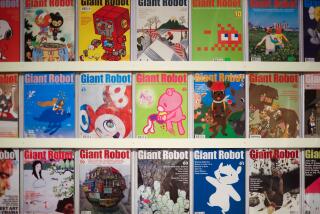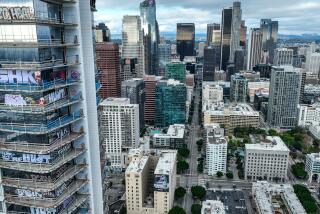Sculptor Kenzi Shiokava was a distinctly L.A. artist. A posthumous exhibit shows why
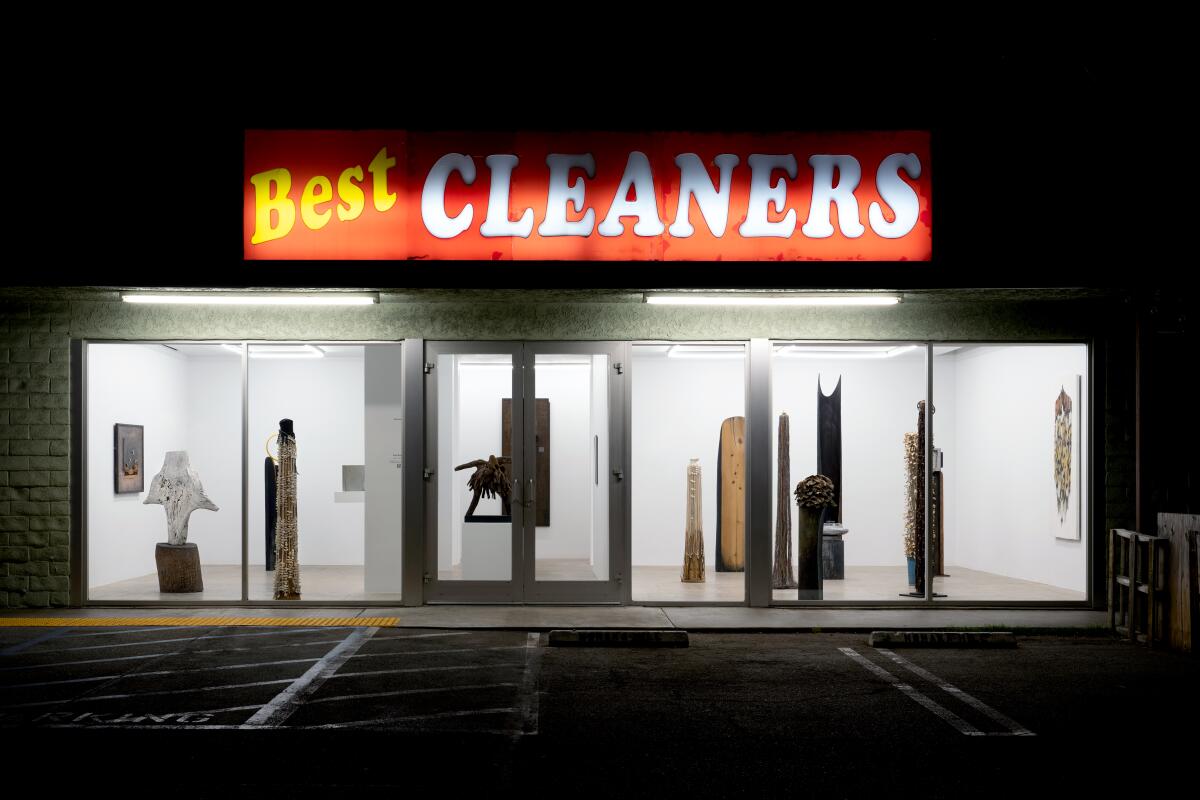
Sculptor Kenzi Shiokava was an artist only L.A. could produce: a Brazilian-born immigrant of Japanese descent who made his living as a gardener and circulated mainly in the Black arts community around the Watts Towers Arts Center.
Shiokava, who died in 2021 at the age of 82, arrived in the U.S. in 1964 and attended Chouinard (now CalArts) and Otis College of Art and Design. Over the course of his 50-year career, he created dozens of soaring wooden totems and playful assemblage works that hewed new forms from the trimmings and castoffs of his gardening labors, and the detritus of his South L.A. neighborhood.
His work evokes Japanese woodcarving traditions, Brazilian Candomblé and Catholic imagery. But it is perhaps most akin to the assemblage work that emerged in the wake of the 1965 Watts uprising , when Black artists like Noah Purifoy and John Outterbridge began making trenchant art out of the city’s charred remains. “It’s a very challenging practice to encapsulate,” said Nolan Jimbo, a curatorial fellow at Chicago’s Museum of Contemporary Art, who wrote a graduate thesis on Shiokava, “which is also what’s great about it.”
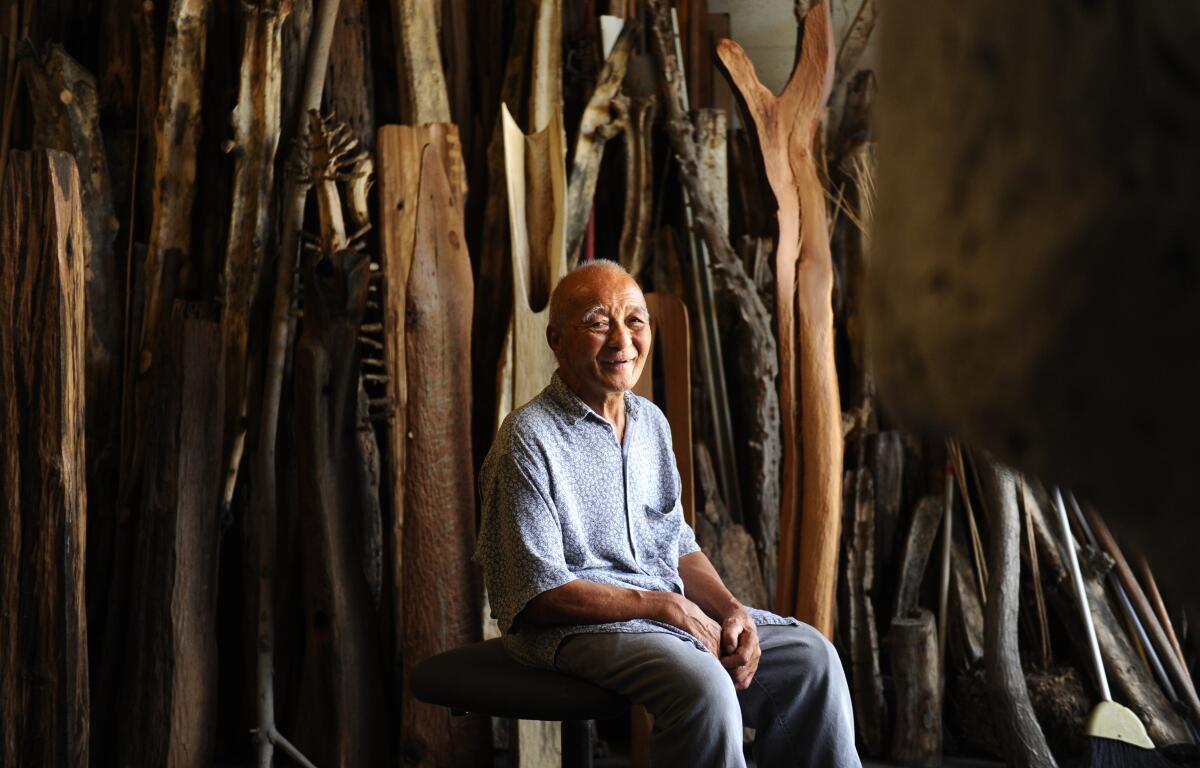
Although Shiokava worked and exhibited steadily, wider recognition eluded him until 2016. At the age of 78, he became the “breakout star” of the Hammer Museum’s “Made in L.A.” biennial, winning the $25,000 Mohn Public Recognition Award. This new level of renown led to many press profiles and interviews, inclusion in several group exhibitions and a solo show in 2019 at the Ben Maltz Gallery at Otis. But gallery representation, which often provides financial security and secures an artist’s legacy, did not materialize. Now, his estate is being represented by Hollywood gallery Nonaka-Hill, which is celebrating him with a retrospective on view through July 15.
The gallery’s main space, in a strip mall near the corner of Highland and Melrose avenues, features a selection of his larger works, ranging in tone from the austerely spiritual to the whimsically eclectic. “Untitled (Primal Totem Series)” from 1986 is a blackened telephone pole incised with a deep, curved cavity whose edges seem to float upward into two elegant, horn-like points.
By contrast, “Untitled” from 1998 is a grid of black cubbyholes, each one containing a found treasure: a baby doll’s head, a Japanese daruma doll, a plastic apple, the head of the Red Power Ranger. Around the corner on Melrose, in a more intimate space, are an array of smaller pieces: a shallow black box holding a coconut shell whose interior appears to glow like a sunset or a shiny pearl, a colorful abstraction made from nothing but children’s building blocks and a pair of spindly wire towers festooned with beads and sequins as if dressed for Brazilian Carnival.
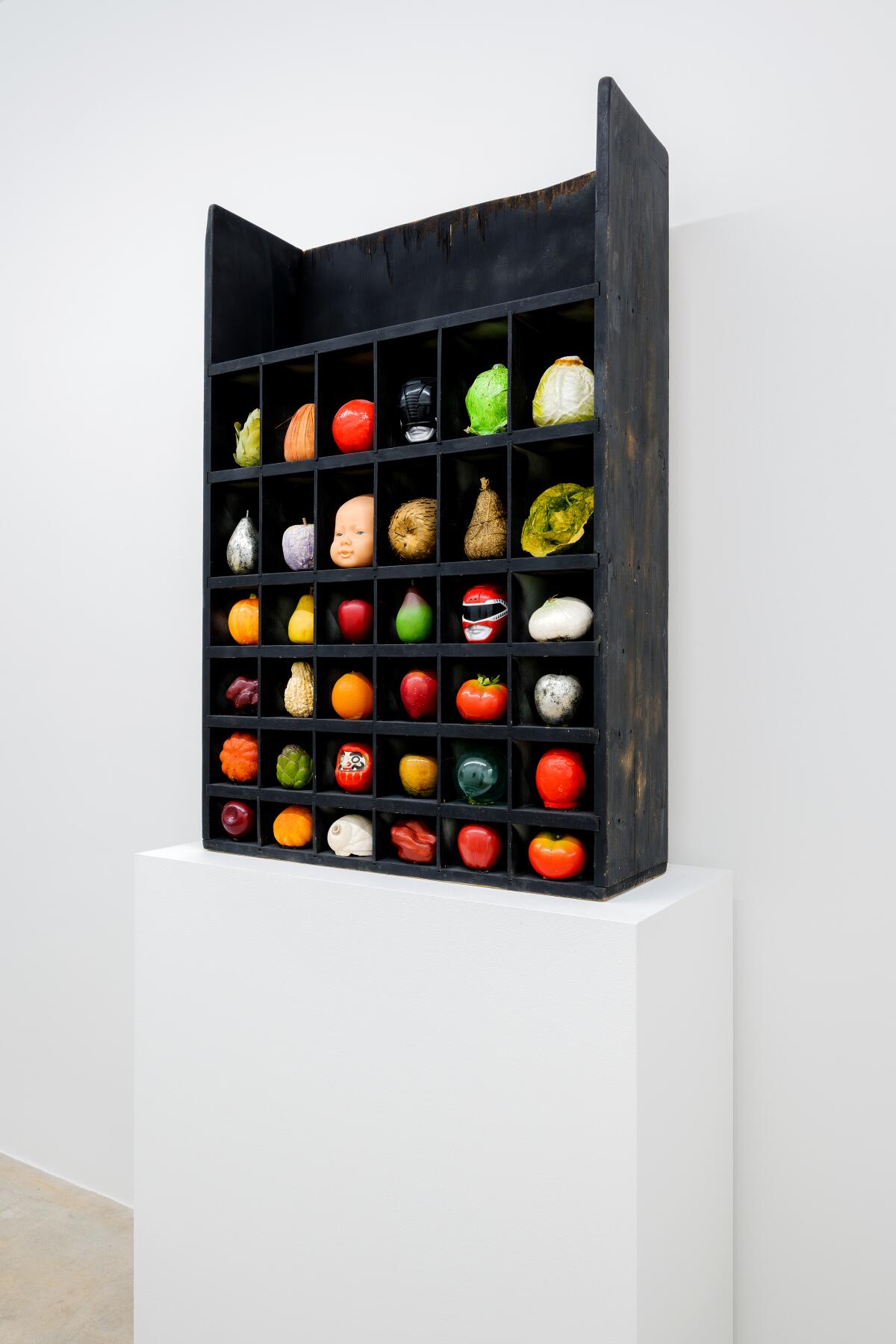
At first glance, Nonaka-Hill may seem like an odd place for work so enmeshed with the materials and culture of L.A.; most of the gallery’s artists live and work in Japan. The gallery’s mission, said co-founder Rodney Nonaka-Hill, “is to add to what people already think of Japan and add new possible narratives,” asserting that the category of “Japanese art” is much more expansive and inclusive than most Westerners think.
Seeing Shiokava’s work at the Hammer in 2016 was a pivotal moment for Nonaka-Hill, who is white and had nurtured a lifelong fascination with Japanese art and culture that harks back to his great grandparents, Christian missionaries in Japan. Shiokava’s work encouraged him and his co-founder and husband, Taka, to open the gallery in 2018. It “really helped us to formulate a gallery that would not be Japanese art made by Japanese people living in Japan that looks Japanese,” he said. “It helped loosen that up in a way.”
Scholar and curator Kris Kuramitsu agrees. “There is no essential Japanese-ness in Kenzi,” she said. Kuramitsu wrote about Shiokava for the 2017 “Transpacific Borderlands” exhibition at the Japanese American National Museum and visited his studio on multiple occasions. She says that while there are some formal and material affinities between Shiokava’s work and Japanese artistic traditions, the artist, like many of his peers, was influenced by the swell of interest in Zen Buddhism that swept the U.S. in the 1960s. “That was his sort of way of thinking about his Japanese heritage and its relationship to his artistic practice,” she said. MCA curator Jimbo showed me a copy of D. T. Suzuki’s popular book, “Zen and Japanese Culture,” which Shiokava had dedicated and given to him.
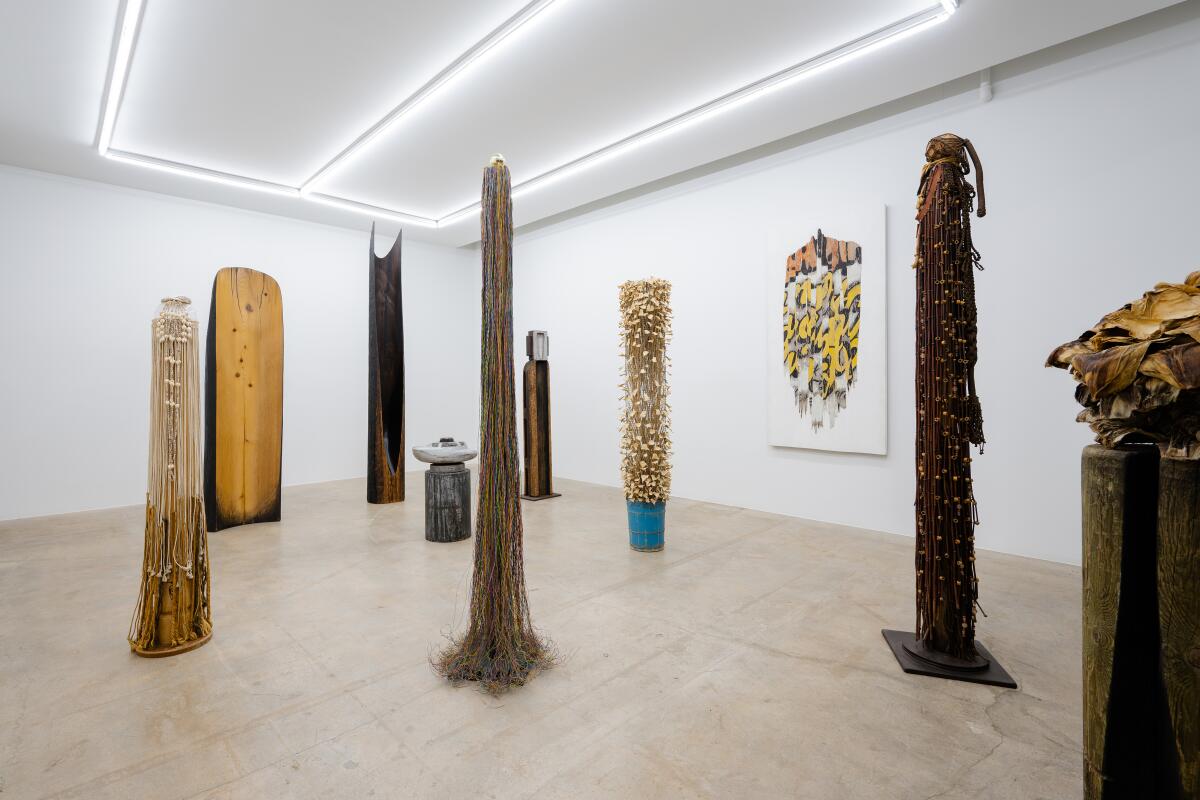
Shiokava’s relationship to the Japanese American community was also glancing at best. Jimbo said that the artist “was never really part of the very established J.A. [Japanese American] community in L.A. And yet, as a gardener, he was actually partaking in this generations-long history of J.A. men working as gardeners and landscapers.”
However, in his thesis research, Jimbo aligns Shiokava’s work with the Black assemblage practices of his South L.A. neighbors. He describes it as “Afro-Asian interconnectedness” that reflects a shared ethos of survival in the face of racism and exploitative labor relations that had pushed both groups to the fringes of society. He finds this survival embodied in Shiokava’s totems, which stand tall and upright despite being scarred and often scorched in the artist’s slow labor of carving and burning.
For gardener-turned-artist Kenzi Shiokava, new show proves wood is the ultimate ‘Spiritual Material’
Kenzi Shiokava, born 1938, has an academic résumé that reads like those of many established L.A. artists: bachelor’s in fine arts from Chouinard (later CalArts), MFA from Otis College of Art and Design.
Then there is the question of Shiokava’s Catholic faith, which his Japanese-born parents adopted in Brazil. Jimbo recalls that “there were crucifixes everywhere” in his studio. Christian imagery occasionally surfaces in Shiokava’s works, despite their abstraction. “Angel Kachina” from 2003 is a curved black column with flared sides that resemble the shoulders of a choir robe or a pair of folded wings; it is topped with a yellow ring that can only be a halo. An untitled, undated work hanging directly across from the front door of the main gallery is clearly a Y-shaped tree branch, but Shiokava has shaved and honed it so skillfully that it feels like the body of Christ, sagging from an invisible cross.
Shiokava didn’t fit neatly into any of the ready-made categories — Japanese, Brazilian, American, Black, Buddhist, Catholic, art star — often used to pigeonhole people. Yet he managed to hold all these strands and fuse them into a singular, elegant language all his own.
“I asked him a really embarrassingly basic question like, ‘What does Japan mean to you?’” recalled Nonaka-Hill, “And his answer was, ‘Japan means everything to me.’ And I said, ‘Well, then what does Brazil mean to you?’ ‘Brazil means everything to me.’ It just made perfect sense that he could have 200% or even more.”
'Kenzi Shiokava'
Where: Nonaka-Hill, 720 N. Highland Ave., Los Angeles, CA 90038
When: Tuesdays – Saturdays, Noon— 7 pm. Closed Sundays and Mondays.
Info: 323 450 9409, https://www.nonaka-hill.com/contact/
More to Read
The biggest entertainment stories
Get our big stories about Hollywood, film, television, music, arts, culture and more right in your inbox as soon as they publish.
You may occasionally receive promotional content from the Los Angeles Times.

